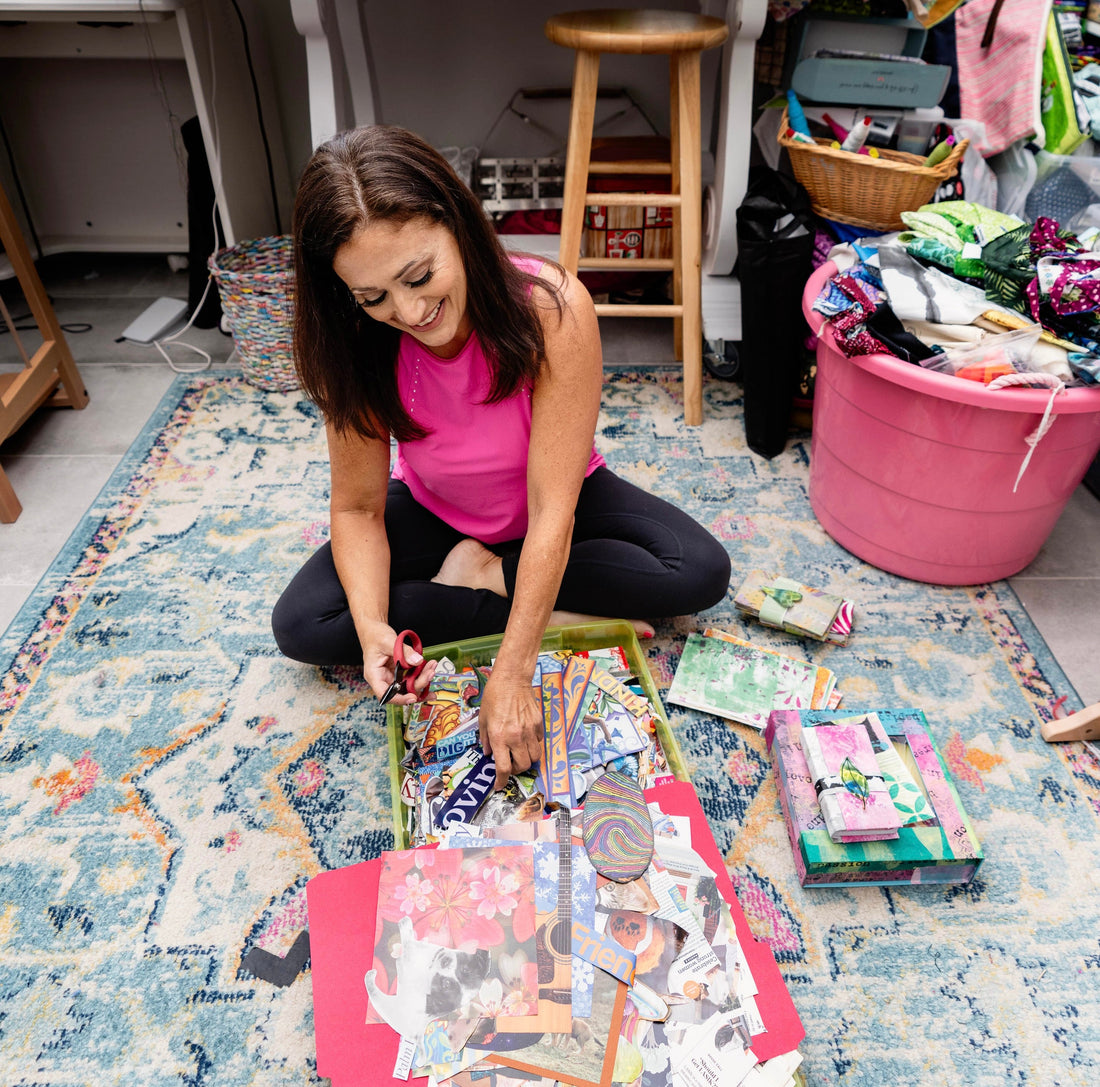
Sustainability and the Shop Owner
I had the pleasure of participating in an annual event in West Palm Beach Florida that is near and dear to my heart. Upcycle Day is that event hosted by Resource Depot, a nonprofit creative reuse center. Guests spend the day with teaching artists rotating workshops so they get to experience each one. Offerings included crochet, paper, weaving and bookbinding, assemblage, and jewelry making. Materials are repurposed or donated, and it is a blast every year.
The annual event is a fundraiser for Resource Depot, which is so much more than a place where people can donate and purchase repurposed goods. There’s a large educational component that works with schools, offering field trips and art kits for classes. Creative teenagers can participate in the yearly fashion program, teaching sewing skills and culminates in a fashion show. As if that is not enough, there is a gallery space that holds shows several times a year; both group and solo artists with art openings, lectures, and workshops that often accompany them.

What does this have to do with my store? As a shop owner for many years, I was acutely aware of the culture of retail where the manufacturers and distributors wanted the shops to be buying new collections and new models every season. Customers often wanted to see what was new and have them available. This created a constant flow of goods and not always at the same pace as they sold out. In addition, there was the conscience in the back of my head that told me that people really did not need to buy a new sewing machine every year when I knew that theirs was perfectly good. The company would encourage us to have them trade up. This just made more machines unwanted, and eventually they become waste. Same with merchandise like fabric and notions. We created a sense of urgency so people would buy the latest collections because they often did not get reprinted. If they liked them, they were encouraged to buy them as not to miss out. FOMO. Ask any creative hobbies and they will tell you they have a large stash of their materials of choice. And the cycle continues.
In my new venture, I have put a focus on kits where all the materials that a consumer needs for a project are included. Less waste. That is not to say that I don’t have choices for them to have in case they are inspired to knit or stitch a project that caught their eye, but the sense of urgency that was so prevalent is slightly diminished in my shop now. I often think about ways to incorporate more sustainability in my business, still being able to make a profit enough to pay my rent and utilities and myself for my time, however minimally.
The creative reuse center is a wonderful model as a nonprofit. There’s lots of challenges associated with running such a venture. None of us are without challenges.
I’ve learned so much in my years as a volunteer, teacher, board member at Resource Depot. I am reminded every day that when you throw something away, there is no “away “. Landfills turn into garbage mountains. There are places like the Solid Waste Authority in Palm Beach County Florida that turns trash into renewable energy. The process is an expensive and large endeavor.

What’s the answer? I don’t know. But I have started over the years to think before I make a purchase and think before I throw something away. Buying or making things that are higher quality can reduce the frequency of the discard. A sweater knit or crocheted from good quality yarn can last for decades and is a lot more special than something junkie purchased online and made in sweatshops so that we can buy them cheap. There are reasons why vintage clothes are still around for us to purchase. They were made better - made to last. Making gifts is more personal and hopefully we’ll have less of a chance to end up in the trash or the donation pile. I like to buy secondhand when possible, and I think about ways to make my business fit my beliefs and be a better steward for the planet.
I don’t have a good answer, but I like to think I can be part of a better practice. Encouraging handmade and hand crafting is also part of a personal mental health practice and a way to connect with others. No matter where we sit on an aisle, we can all come together and connect with creativity and make us better people with a better planet.
